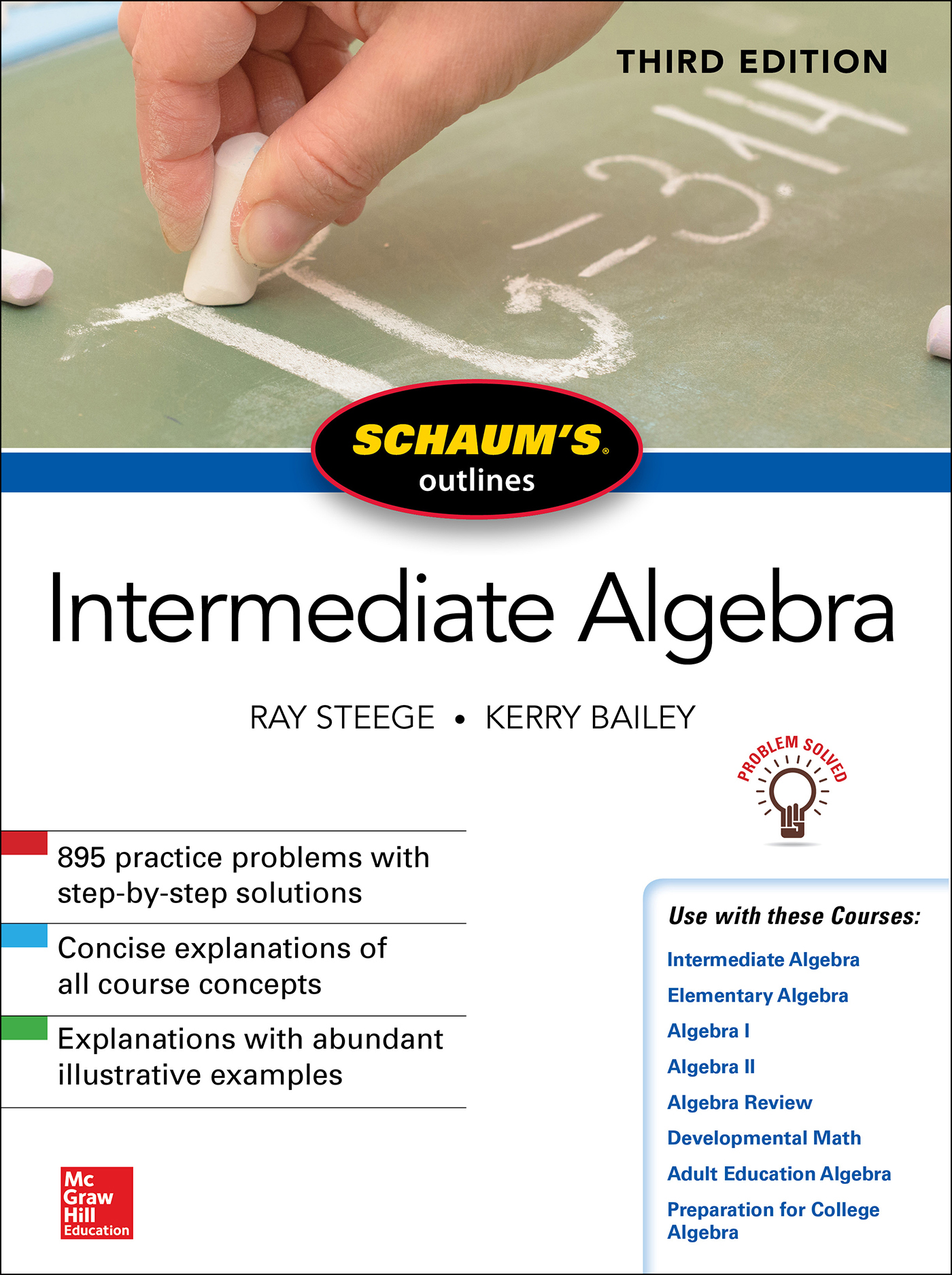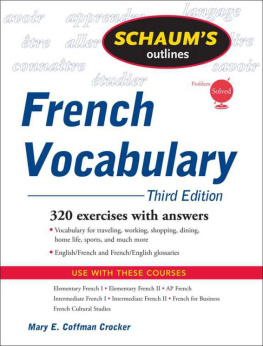Contents
Guide
Page List

 RAY STEEGE
RAY STEEGE received his BA in mathematics from the University of Wyoming and his MA in mathematics from the University of Northern Colorado. The first 10 years of his teaching career were at East High School in Cheyenne, Wyoming. He continued his professional career at Laramie County Community College in Cheyenne, Wyoming, for an additional 25 years prior to his retirement in 1994. Among his many achievements and honors are: past president of the Wyoming Mathematics Association of Two-Year Colleges, Wyoming Mathematics Coalition Steering Committee member, newsletter editor, and recipient of the Outstanding Faculty Member of the Physical Science Division award at the college.
KERRY BAILEY received his BA in mathematics from San Diego State University and his MA in mathematics from the University of Colorado. He taught for 37 years at Laramie County Community College in Cheyenne, Wyoming prior to retiring in 2011, though he still teaches an occasional course or two at Maple Woods College in Kansas City, Missouri.
Prior to this, he taught for 10 years at Pikes Peak Community College in Colorado Springs, Colorado. Among his achievements and honors are: Math Coordinator for the Community College of the Air Force (worldwide) while at PPCC, Wyoming Mathematics Coalition Steering Committee member, news-letter editor, and recipient of the Outstanding Faculty Member of the Physical Science Division award, and corecipient of the Outstanding Faculty Member award for the entire college at Laramie County Community College. Copyright 2018 by McGraw-Hill Education. All rights reserved. Except as permitted under the United States Copyright Act of 1976, no part of this publication may be reproduced or distributed in any form or by any means, or stored in a database or retrieval system, without the prior written permission of the publisher. eBook conversion by codeMantra
Version 1.0 All trademarks are trademarks of their respective owners. eBook conversion by codeMantra
Version 1.0 All trademarks are trademarks of their respective owners.
Rather than put a trademark symbol after every occurrence of a trademarked name, we use names in an editorial fashion only, and to the benefit of the trademark owner, with no intention of infringement of the trademark. Where such designations appear in this book, they have been printed with initial caps. McGraw-Hill Education eBooks are available at special quantity discounts to use as premiums and sales promotions or for use in corporate training programs. To contact a representative, please visit the Contact Us page at www.mhprofessional.com. TERMS OF USE This is a copyrighted work and McGraw-Hill Education and its licensors reserve all rights in and to the work. Use of this work is subject to these terms.
Except as permitted under the Copyright Act of 1976 and the right to store and retrieve one copy of the work, you may not decompile, disassemble, reverse engineer, reproduce, modify, create derivative works based upon, transmit, distribute, disseminate, sell, publish or sublicense the work or any part of it without McGraw-Hill Educations prior consent. You may use the work for your own noncommercial and personal use; any other use of the work is strictly prohibited. Your right to use the work may be terminated if you fail to comply with these terms. THE WORK IS PROVIDED AS IS. McGRAW-HILL EDUCATION AND ITS LICENSORS MAKE NO GUARANTEES OR WARRANTIES AS TO THE ACCURACY, ADEQUACY OR COMPLETENESS OF OR RESULTS TO BE OBTAINED FROM USING THE WORK, INCLUDING ANY INFORMATION THAT CAN BE ACCESSED THROUGH THE WORK VIA HYPERLINK OR OTHERWISE, AND EXPRESSLY DISCLAIM ANY WARRANTY, EXPRESS OR IMPLIED, INCLUDING BUT NOT LIMITED TO IMPLIED WARRANTIES OF MERCHANTABILITY OR FITNESS FOR A PARTICULAR PURPOSE. McGraw-Hill Education and its licensors do not warrant or guarantee that the functions contained in the work will meet your requirements or that its operation will be uninterrupted or error free.
Neither McGraw-Hill Education nor its licensors shall be liable to you or anyone else for any inaccuracy, error or omission, regardless of cause, in the work or for any damages resulting therefrom. McGraw-Hill Education has no responsibility for the content of any information accessed through the work. Under no circumstances shall McGraw-Hill Education and/or its licensors be liable for any indirect, incidental, special, punitive, consequential or similar damages that result from the use of or inability to use the work, even if any of them has been advised of the possibility of such damages. This limitation of liability shall apply to any claim or cause whatsoever whether such claim or cause arises in contract, tort or otherwise.
Preface
The primary purpose of this book is to provide an effective tool for students that will help them understand and master the basic concepts and techniques of Intermediate Algebra or Algebra II. The book can be useful to the reader in several ways.
It may be used as a valuable supplementary text for the second algebra course to assist in clarifying and simplifying algebraic concepts and procedures. The book may also be used for self-study or as the text for a course in Intermediate Algebra or Algebra II. Additionally, it is an excellent book to review in order to clarify concepts and improve skills prior to enrollment in College Algebra. We have attempted to provide a treatment of Intermediate Algebra or Algebra II that is more easily understood, and therefore more useful than most available texts at this level. The book possesses numerous benefits or strengths. Concepts are introduced and explained at the students level in a thorough, brief manner.
The processes employed make the algebra involved as simple and concrete as possible. Each concept is illustrated completely by one or more solved problems which clarify and illuminate the relevant ideas. Definitions, properties, and so on, are expressed in clear, concise, understandable words as well as in mathematical form. Calculator procedures using RPN and Algebraic Entry calculators are illustrated and employed where it is appropriate. The graphing calculator is used to great advantage in many instances. A large number of graphs are included to help the student visualize abstract concepts.
Step-by-step procedures accompanied by clarifying statements are employed in many instances. Word problems are often very difficult for students. We have provided the most detailed step-by-step treatment of word problems available. Students are led through the process in phases, thereby resulting in manageable steps. The book includes recommendations to the student for correct, efficient use of mathematics. A concise summary of effective study skills and suggestions on proven techniques is included.
There are 886 solved problems with explanations and step-by-step solutions included. Solved problems are referenced to similar supplementary problems. There are 1,100 supplementary problems with answers included for student practice. Problems are arranged in an easy to more difficult order. The book covers the concepts typically found in the second algebra course including: fundamental concepts; polynomials; rational expressions; first- and second-degree equations and inequalities; exponents, roots, and radicals; systems of equations and inequalities; relations and functions; exponential and logarithmic functions; sequences, series, and the binomial theorem. The terms and notation employed are those commonly used by other authors.




 RAY STEEGE received his BA in mathematics from the University of Wyoming and his MA in mathematics from the University of Northern Colorado. The first 10 years of his teaching career were at East High School in Cheyenne, Wyoming. He continued his professional career at Laramie County Community College in Cheyenne, Wyoming, for an additional 25 years prior to his retirement in 1994. Among his many achievements and honors are: past president of the Wyoming Mathematics Association of Two-Year Colleges, Wyoming Mathematics Coalition Steering Committee member, newsletter editor, and recipient of the Outstanding Faculty Member of the Physical Science Division award at the college. KERRY BAILEY received his BA in mathematics from San Diego State University and his MA in mathematics from the University of Colorado. He taught for 37 years at Laramie County Community College in Cheyenne, Wyoming prior to retiring in 2011, though he still teaches an occasional course or two at Maple Woods College in Kansas City, Missouri.
RAY STEEGE received his BA in mathematics from the University of Wyoming and his MA in mathematics from the University of Northern Colorado. The first 10 years of his teaching career were at East High School in Cheyenne, Wyoming. He continued his professional career at Laramie County Community College in Cheyenne, Wyoming, for an additional 25 years prior to his retirement in 1994. Among his many achievements and honors are: past president of the Wyoming Mathematics Association of Two-Year Colleges, Wyoming Mathematics Coalition Steering Committee member, newsletter editor, and recipient of the Outstanding Faculty Member of the Physical Science Division award at the college. KERRY BAILEY received his BA in mathematics from San Diego State University and his MA in mathematics from the University of Colorado. He taught for 37 years at Laramie County Community College in Cheyenne, Wyoming prior to retiring in 2011, though he still teaches an occasional course or two at Maple Woods College in Kansas City, Missouri.